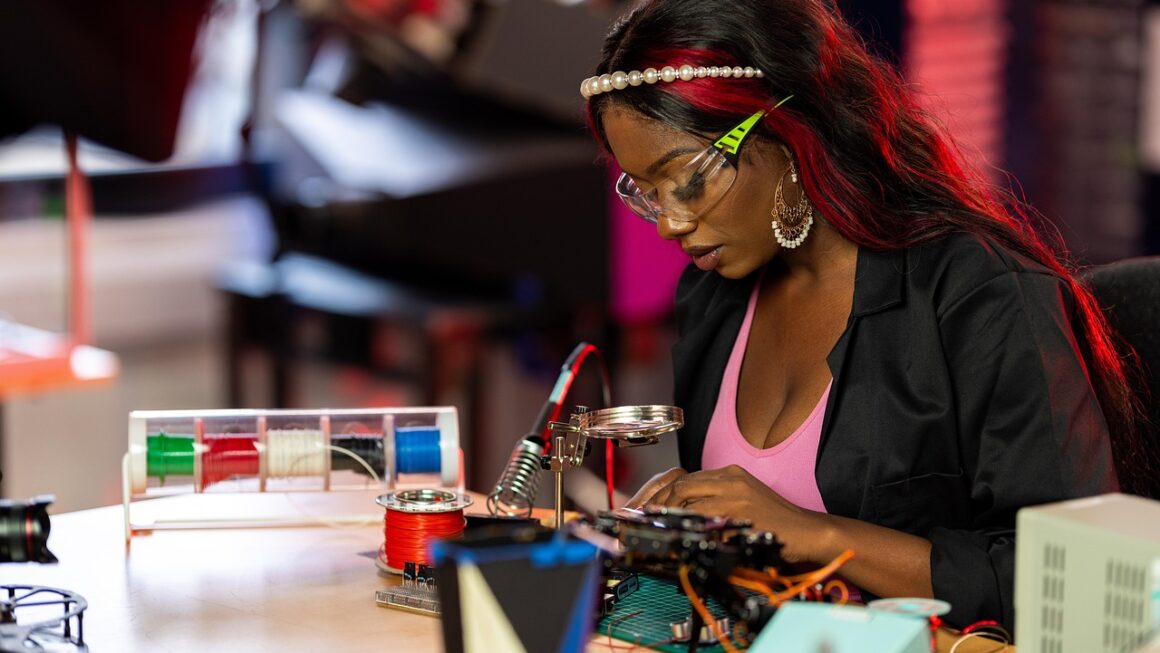Imagine a world where you come home after a long day, and your floors are already sparkling clean, effortlessly maintained by a silent, tireless worker. This isn’t a futuristic fantasy; it’s the reality offered by cleaning robots. These automated marvels are revolutionizing the way we approach household chores, freeing up our time and energy for the things that truly matter. From basic vacuuming to advanced mopping, cleaning robots are becoming increasingly sophisticated and indispensable in modern homes. This post delves into the world of cleaning robots, exploring their capabilities, benefits, and what to consider when choosing the right one for your needs.
The Rise of Cleaning Robots: A Modern Convenience
What are Cleaning Robots?
Cleaning robots, also known as robotic vacuums or robotic mops, are autonomous devices designed to clean floors with minimal human intervention. They use a combination of sensors, algorithms, and cleaning tools to navigate around obstacles, detect dirt, and efficiently clean various floor types.
Why are They Becoming So Popular?
The popularity of cleaning robots is soaring, driven by several factors:
- Time Savings: The most significant benefit is the time saved on cleaning. Instead of spending hours vacuuming or mopping, you can automate the process.
- Convenience: Cleaning robots can be scheduled to run automatically, allowing for regular cleaning even when you’re not home.
- Accessibility: They can clean under furniture and in hard-to-reach areas that are difficult to access with traditional cleaning methods.
- Technological Advancements: Continuous improvements in navigation, suction power, battery life, and smart features are making these robots more effective and user-friendly.
- Affordability: While high-end models can be pricey, there are many affordable options available, making them accessible to a wider range of consumers.
Statistics & Market Growth
The global cleaning robots market is experiencing significant growth. According to recent reports, the market size is projected to reach billions of dollars in the coming years, with a compound annual growth rate (CAGR) of over 10%. This growth is fueled by increasing disposable incomes, rising awareness of the benefits of automated cleaning, and the continuous development of innovative technologies.
Types of Cleaning Robots: Find Your Perfect Match
Robotic Vacuum Cleaners
Robotic vacuum cleaners are the most common type of cleaning robot. They use brushes and suction to pick up dust, dirt, and debris from floors. Key features to consider include:
- Suction Power: Measured in Pascals (Pa), higher suction power is better for deep cleaning and picking up pet hair. Example: Models with 2000Pa or more are ideal for homes with pets.
- Battery Life: Look for models with sufficient battery life to clean your entire home on a single charge. Example: A battery life of 90-120 minutes is generally suitable for average-sized homes.
- Navigation System: Advanced navigation systems, such as LiDAR (Light Detection and Ranging) or vSLAM (Visual Simultaneous Localization and Mapping), allow the robot to map your home and clean more efficiently.
- Filtration System: HEPA filters are essential for trapping allergens and dust particles, making them ideal for people with allergies or asthma.
- Smart Features: Wi-Fi connectivity, smartphone app control, voice assistant integration (e.g., Amazon Alexa, Google Assistant), and zoning capabilities enhance the user experience.
Robotic Mops
Robotic mops are designed to clean hard floors using water or cleaning solutions. There are two main types:
- Wet Mopping Robots: These robots spray water or cleaning solution onto the floor and then mop it with a microfiber pad. Example: iRobot Braava Jet m6 is a popular wet mopping robot.
- Dry Sweeping Robots: These robots use a dry microfiber pad to sweep up dust and debris. They are often used as a complement to robotic vacuum cleaners. Example: iRobot Braava Jet 240 is a good option for small spaces.
Hybrid Vacuum and Mop Robots
Hybrid robots combine both vacuuming and mopping functionalities into a single device. They can vacuum and then mop the floor in one go, saving you even more time and effort. However, they may not be as effective as dedicated vacuum or mop robots.
- Example: Roborock S7 is a popular hybrid robot vacuum and mop with advanced features like sonic mopping.
Key Features to Consider When Choosing a Cleaning Robot
Navigation and Mapping Technology
The navigation system is crucial for efficient cleaning. Consider these technologies:
- Random Navigation: Bounces around the room randomly, less efficient.
- Gyro Navigation: Uses gyroscopes to create a more systematic cleaning path.
- LiDAR Navigation: Uses lasers to create a detailed map of your home, allowing for precise navigation and efficient cleaning.
- vSLAM Navigation: Uses cameras and visual data to map your home.
Actionable takeaway: LiDAR or vSLAM navigation is highly recommended for larger homes or those with complex layouts.
Battery Life and Charging
Ensure the robot has sufficient battery life to clean your entire home on a single charge. Consider these factors:
- Battery Capacity: Higher capacity batteries generally offer longer run times.
- Charging Time: How long does it take to fully charge the robot?
- Auto-Docking: Does the robot automatically return to its charging dock when the battery is low?
Actionable takeaway: Check the battery life specifications and read user reviews to get a realistic understanding of the robot’s performance.
Cleaning Performance and Features
Evaluate the cleaning performance based on your specific needs:
- Suction Power (for vacuums): Consider the suction power in Pascals (Pa).
- Mop Type (for mops): Wet mopping, dry sweeping, or vibrating mop heads.
- Floor Type Compatibility: Ensure the robot is suitable for your floor types (e.g., hardwood, carpet, tile).
- Edge Cleaning: Can the robot effectively clean along edges and corners?
- Obstacle Avoidance: How well does the robot avoid obstacles such as furniture, cables, and pet toys?
Actionable takeaway: Read reviews and compare specifications to find a robot that excels in the areas most important to you.
Smart Features and Connectivity
Smart features can significantly enhance the user experience:
- Wi-Fi Connectivity: Allows you to control the robot remotely via a smartphone app.
- Smartphone App Control: Schedule cleaning, adjust settings, view cleaning history, and receive notifications.
- Voice Assistant Integration: Control the robot with voice commands using Amazon Alexa or Google Assistant.
- Zoning: Create virtual boundaries or zones to specify which areas to clean or avoid.
- No-Go Zones: Designate areas where the robot should not go, such as around pet bowls or fragile items.
Actionable takeaway: Consider which smart features are most important to you and choose a robot that offers them.
Tips for Maximizing the Performance of Your Cleaning Robot
Prepping Your Home for Optimal Cleaning
Preparing your home before running your cleaning robot can significantly improve its performance:
- Clear Obstacles: Pick up loose items, such as cables, toys, and clothing, from the floor.
- Secure Cords: Use cable ties or cord protectors to prevent the robot from getting tangled.
- Raise Furniture: If possible, raise low-hanging furniture to allow the robot to clean underneath.
- Secure Rugs: Ensure that rugs are securely anchored to prevent them from being moved or damaged.
Regular Maintenance and Cleaning
Regular maintenance is essential for keeping your cleaning robot running smoothly:
- Empty the Dustbin: Empty the dustbin regularly to maintain optimal suction power.
- Clean the Brushes: Remove hair and debris from the brushes to prevent them from becoming tangled.
- Replace Filters: Replace filters regularly to maintain air quality and prevent dust buildup.
- Clean the Sensors: Wipe the sensors with a soft cloth to ensure accurate navigation.
- Check the Wheels: Inspect the wheels for debris and clean them as needed.
Troubleshooting Common Issues
Here are some common issues and how to troubleshoot them:
- Robot Gets Stuck: Ensure the robot has sufficient clearance under furniture and remove any obstacles that may be causing it to get stuck.
- Poor Cleaning Performance: Check the dustbin, brushes, and filters for clogs or debris.
- Navigation Issues: Clean the sensors and ensure that the robot has a clear view of its surroundings.
- Connectivity Problems: Check your Wi-Fi connection and ensure that the robot is properly connected to your network.
Conclusion
Cleaning robots are transforming the way we approach household chores, offering a convenient and efficient solution for maintaining clean floors. By understanding the different types of cleaning robots, key features, and maintenance tips, you can choose the perfect robot for your needs and enjoy a cleaner, more comfortable home. Embracing this technology not only saves you time and effort but also contributes to a healthier and more enjoyable living environment. Invest in a cleaning robot today and experience the future of home cleaning!




